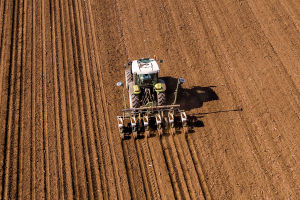Hey Lykkers! Barns have long stood as symbols of rural life, conjuring images of expansive fields, grazing livestock, and the rustic charm of the countryside.
These iconic structures, often painted in their characteristic red, serve as much more than simple storage spaces—they are central to the functionality of farms and the lives of those who work them.
The Origins of the Barn
Barns date back thousands of years, with early versions built by agricultural communities to house animals, store grain, and protect tools from the elements. Over time, barns evolved in structure and purpose, adapting to the changing needs of farming practices. Early barns were made of timber frames, a construction technique that allowed for large open spaces inside. This method is still revered today for its strength and durability.
Different Types of Barns
There is no one-size-fits-all when it comes to barns. Different regions and farming needs have resulted in a variety of barn types, each with its own design and purpose. Here are a few common types:
Pole Barns:
These are cost-effective and simple structures, often used to store farming equipment or house livestock. They are made with large poles buried in the ground, supporting the roof without the need for walls.
Gambrel Barns:
This style features a dual-pitched roof, giving it more storage space in the upper level. Gambrel barns are often used as hay barns or to store grain and other supplies.
Bank Barns:
These barns are built into the side of a hill or bank, giving access to two different levels—one for livestock and another for storage. The natural hill acts as part of the barn’s foundation.
Round Barns:
Less common but historically significant, round barns were designed for efficiency. Their circular design allowed farmers to move around the barn quickly and easily, feeding animals or tending to crops stored within.
15 Types of Barns and Barn Styles You Should Know
Video By Agronomag
Key Features of a Barn
Barns are more than just four walls and a roof. Many have distinctive features that make them both functional and iconic:
Lofts:
Many barns feature a loft or second level, typically used for hay storage. This design maximizes space while keeping feed dry and easily accessible for animals.
Cupolas:
Often seen on top of barns, cupolas act as ventilation systems, allowing heat to escape from the barn while providing a lookout for farmers.
Sliding Doors:
Large sliding doors are common in barns, making it easier to move large equipment or animals in and out. These doors are a hallmark of barn design, and they also help with ventilation.
Why Are Barns Painted Red?
The famous red barn isn’t just an aesthetic choice; it’s rooted in practicality. In earlier times, farmers used a mixture of linseed oil and rust to seal the wood on their barns, protecting it from weathering. The rust gave the mixture its distinct red hue, which eventually became a tradition. Today, barns may be painted red out of nostalgia, but they remain a visual staple in rural landscapes.
The Modern Barn
While many barns today still serve their original purpose, some have been repurposed into event spaces, homes, or even workshops. The large, open interiors make them ideal for weddings, parties, or retreats. These modern uses keep barns relevant and preserve the architectural heritage of rural life.
Barns are not just functional structures; they are living testaments to the ingenuity, hard work, and adaptability of generations of farmers. If it's a traditional red barn, a sleek modern build, or a repurposed event space, barns continue to play an important role in the rural landscape, embodying the spirit of agriculture and the history of farming life.


